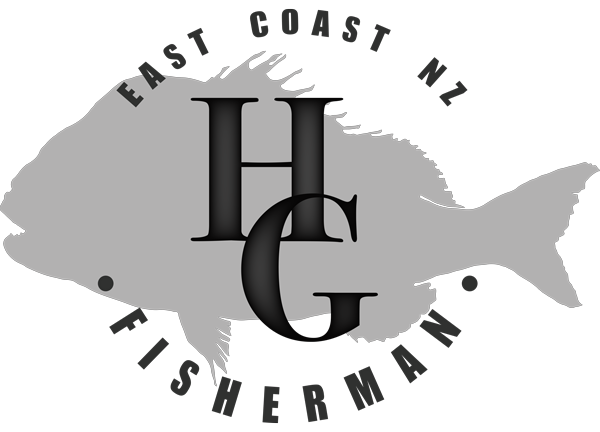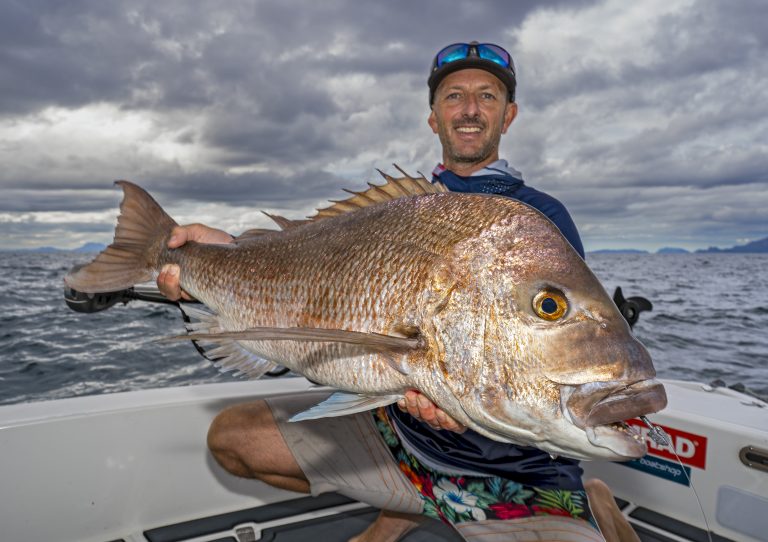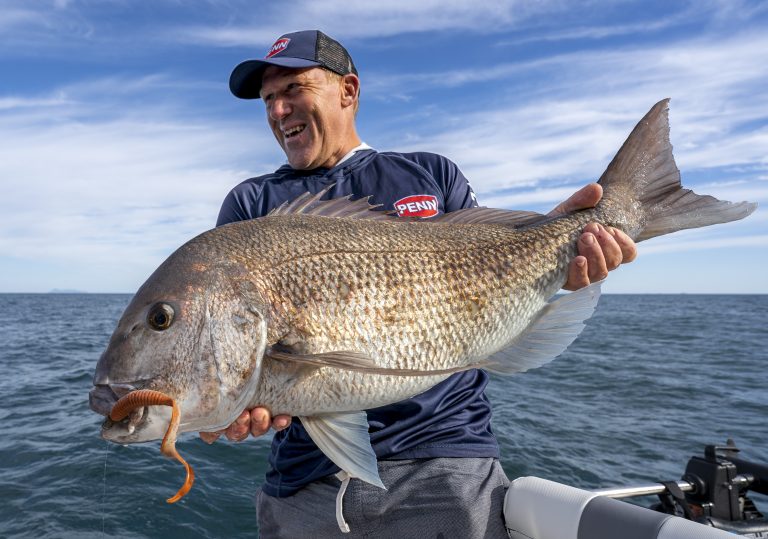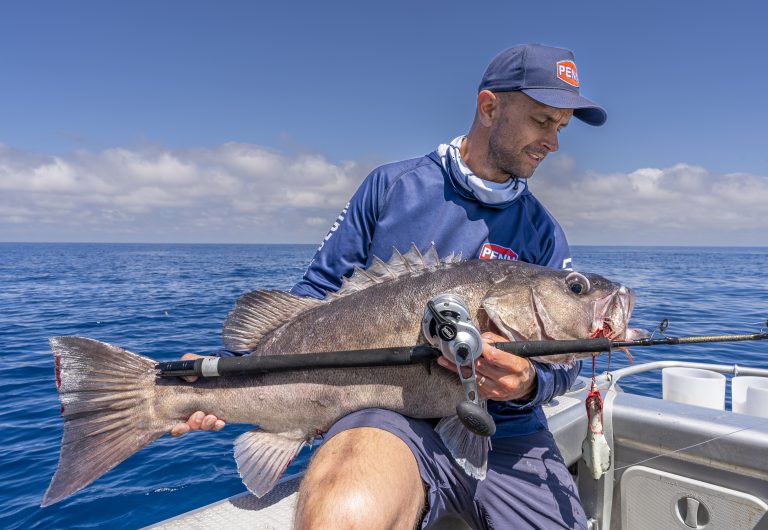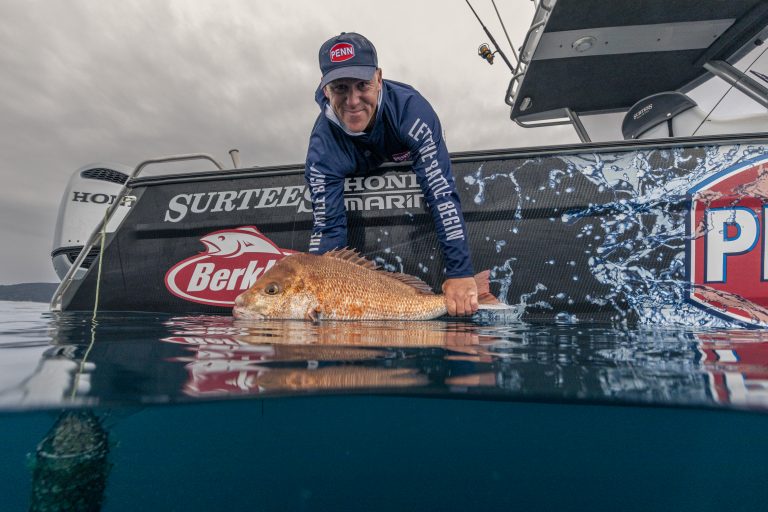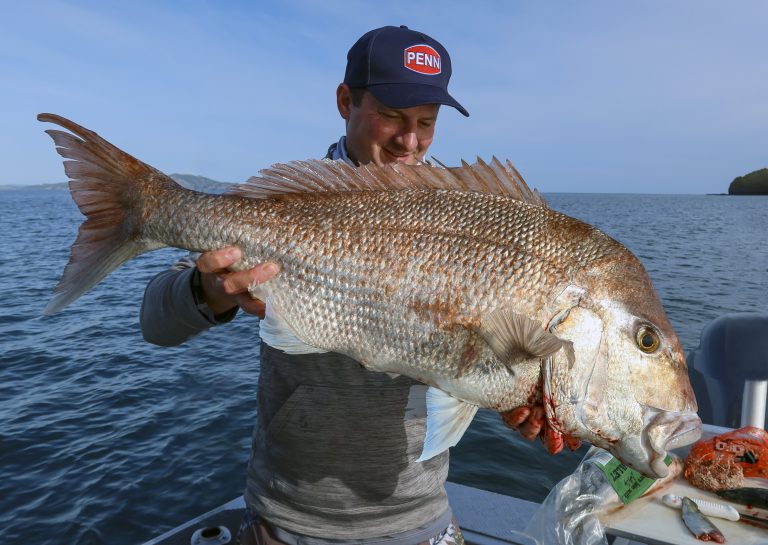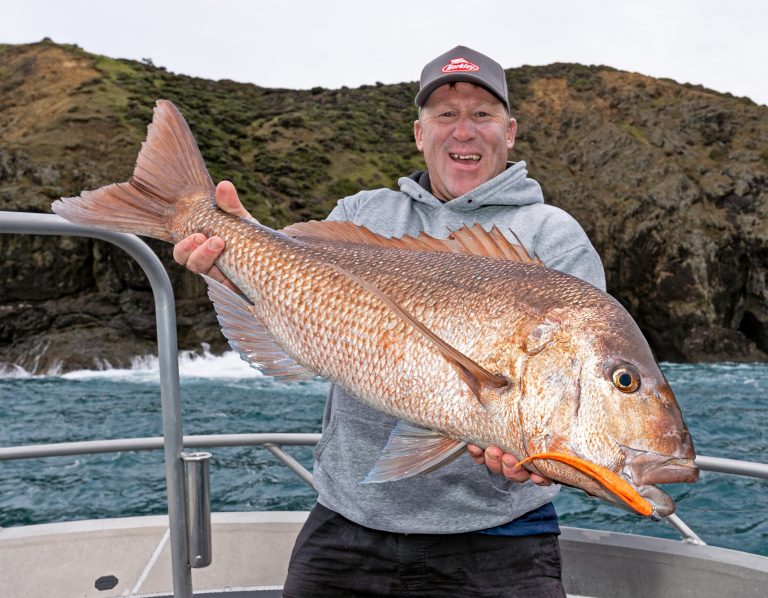Fishing the wash has become addictive, and it’s a style that draws me onto the water every week. I watch the wind maps like a hawk and hit the salt any window I get, and I’m all about fishing an unspoilt coastline far away from other boats. And luckily, with most of my fishing mid-week, I seldom see more than a few recreational boats.
When I say fishing the wash, it’s just terminology for all the juicy coastline that’s likely to hold snapper. Of course, the foaming white water is very much a part of this, but so are all the other crooks and crannies with water flow. Any terrain from about 3 metres to -12 metres is what we cast at, and deeper drop-offs are hard up against the cliff.
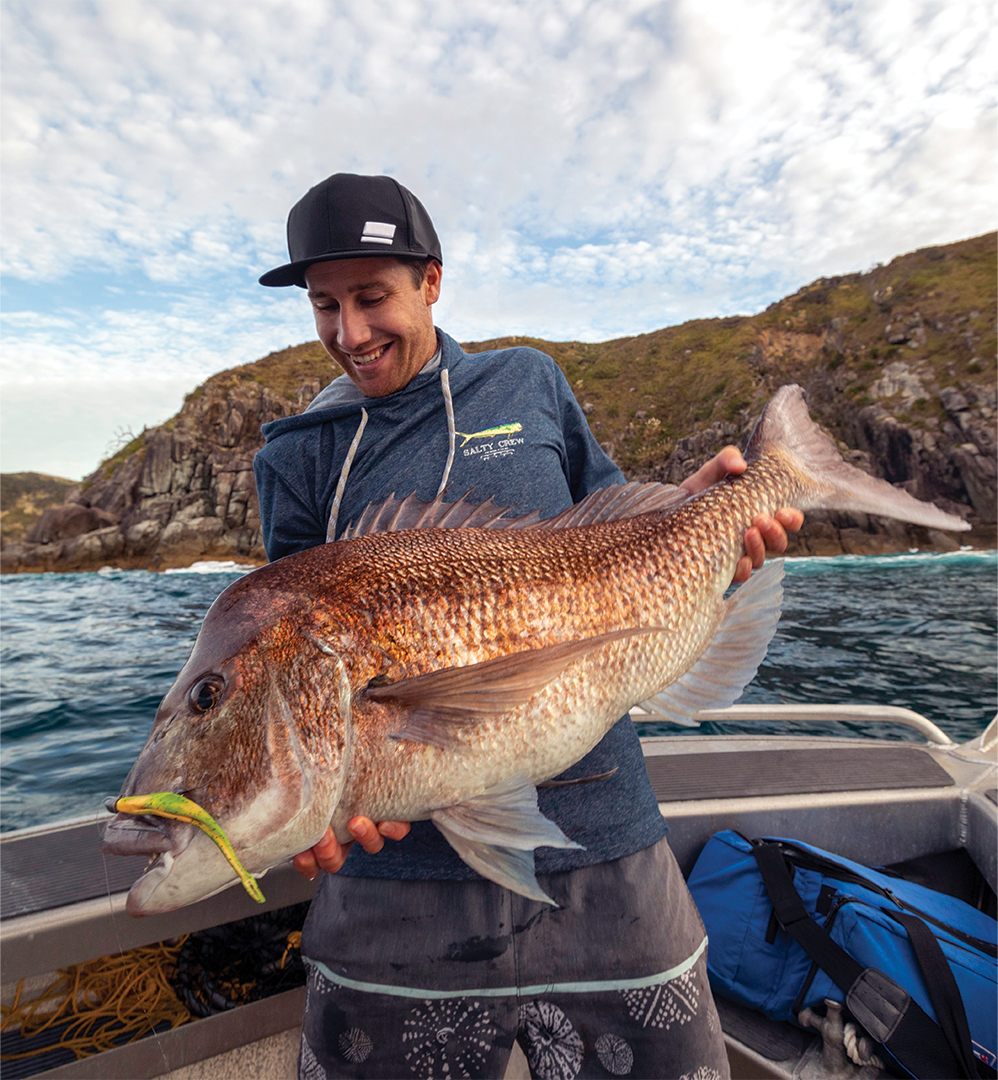

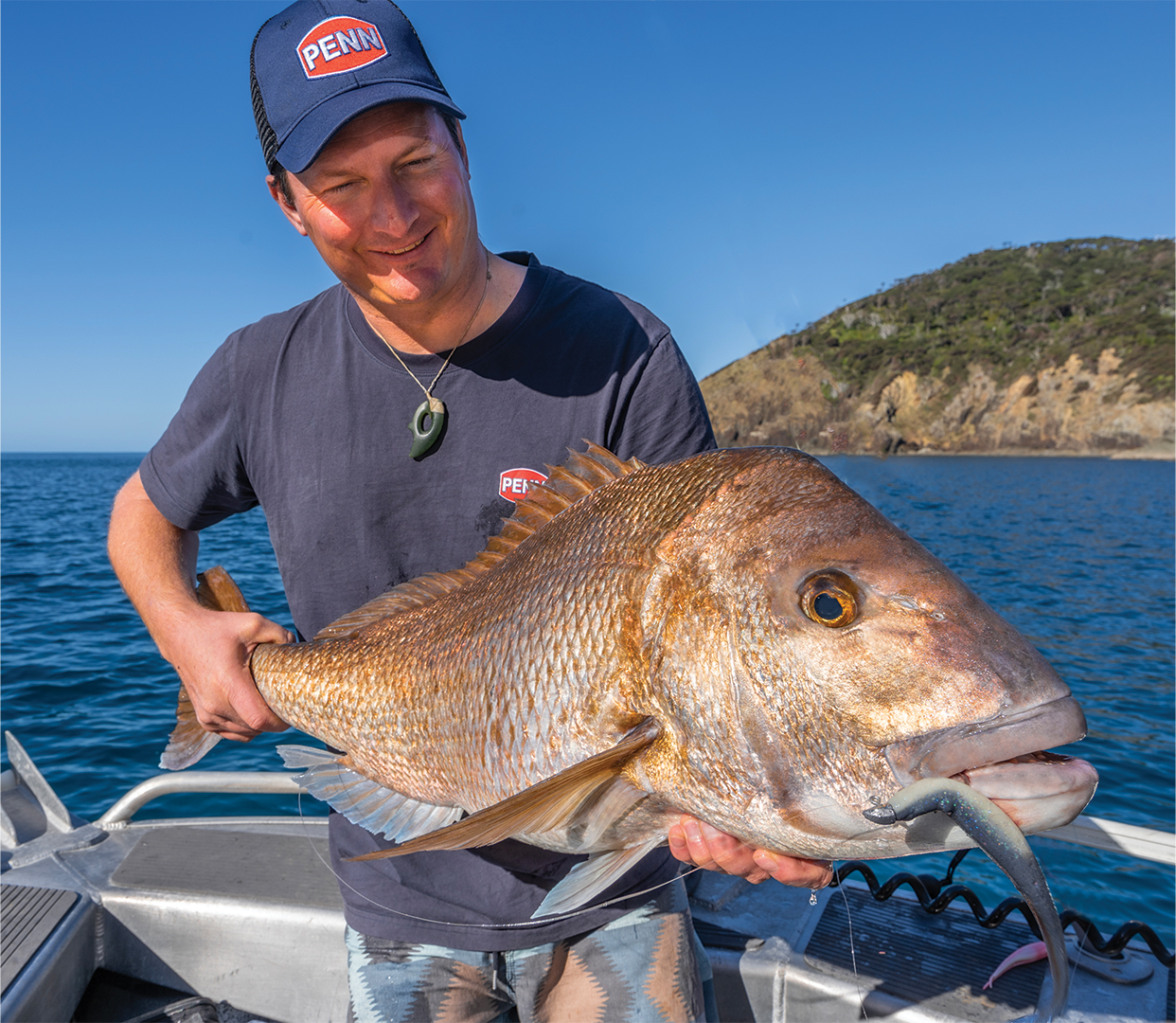
Once we hit the water and are steaming out the harbour with the sun just starting to pip the horizon. Any hint of stress evaporates from the mind. I can’t think of a better relaxer than heading off on another adventure, especially if it involves finding new ground.
The best time of year for this style of fishing is winter, and you get gin-clear water, with 10 metres underwater visibility quite normal. More if there is no wind or swell. As you can imagine, clean, clear water can make fishing harder. And it does. It’s important to maximise your day and ensure you are casting at sunup. If it’s sub 5 knots for the day, sunrise is your best chance at a big fish. For this reason, days where it is blowing 10-13 knots considerably increase your catch rate. Even a little swell can make all the difference on a glass-out day.
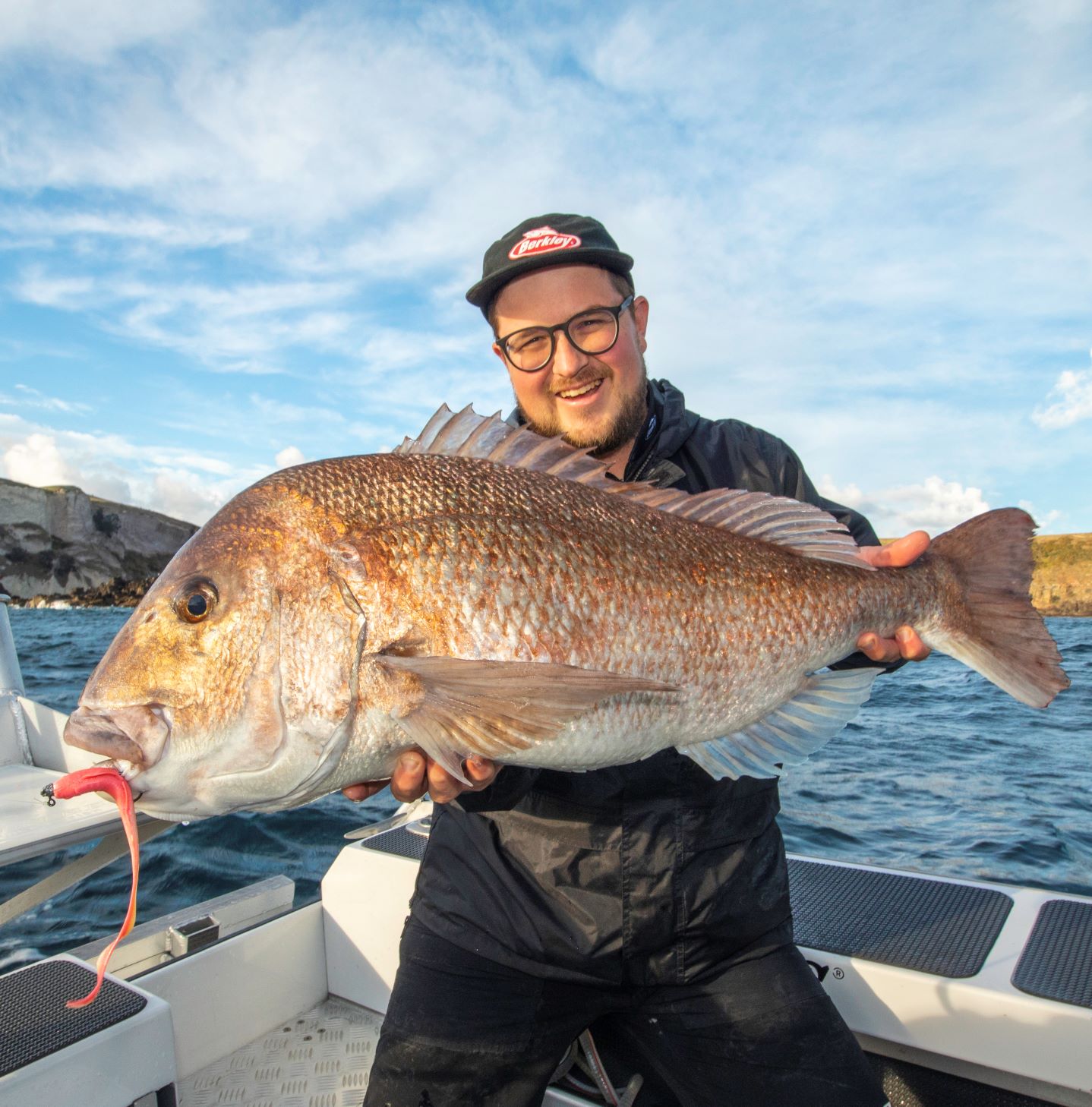

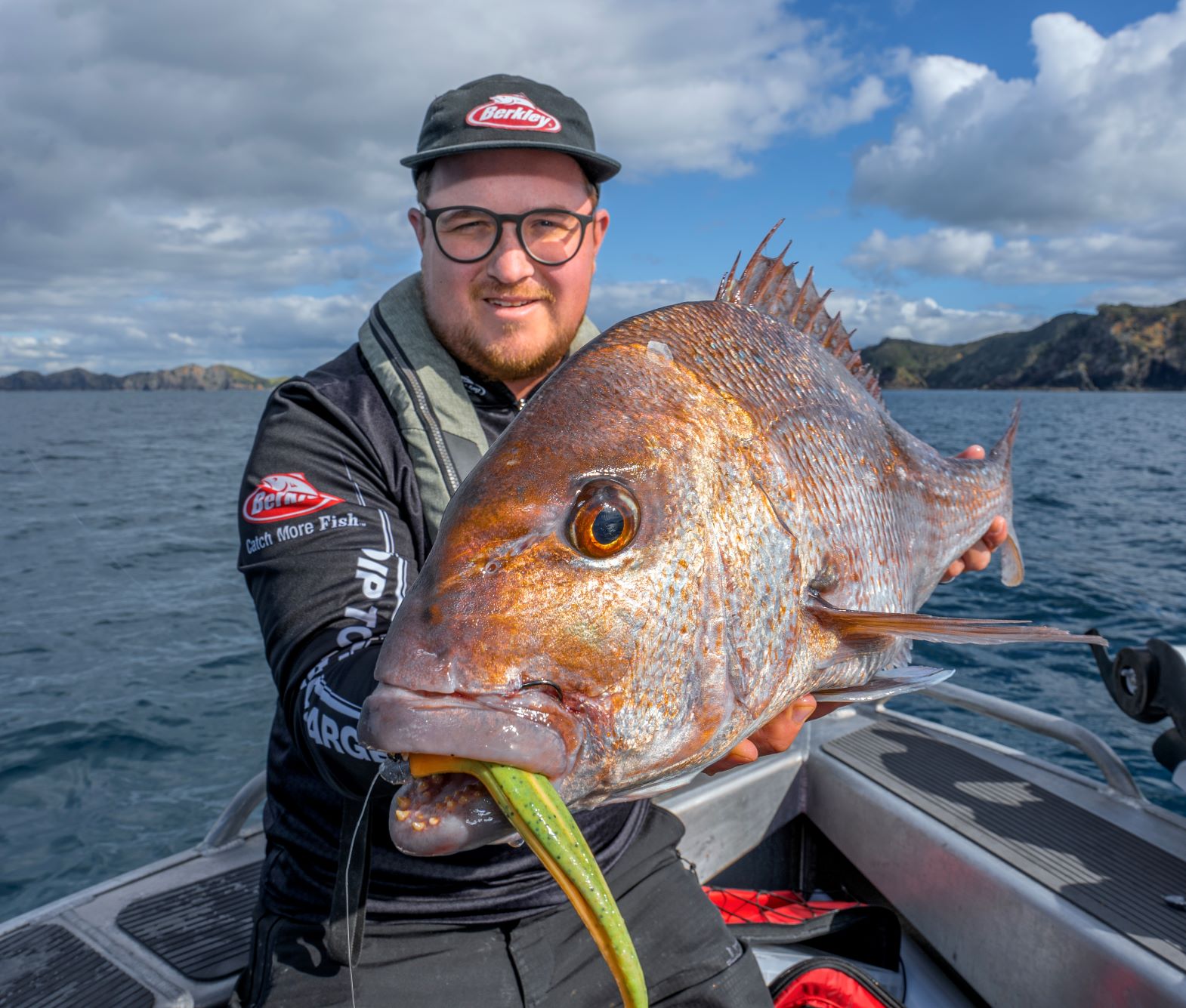
In 2021, Berkley introduced 9” Jerk Shads to the NZ market. Every fisher froths on new lures; initially, my thoughts were kingfish. After several casts into the wash, it soon became apparent that Berkley had perhaps unwittingly produced their very best big snapper bait to date!
It’s all in the exaggerated tail movement that only requires a slow retrieve for a crazy good action that always gets hammered when fish are present. Big or small. Matched with the Nitro Saltwater Pro Jig Head #5/0 in 3/8 ounce, you’re set for a hectic day’s casting.
Lure fishing teaches you so much about fish behaviour, and it also brings so many more questions as well. The biggest thing I’ve learnt is you just don’t know what’s around the next corner and that a big fish is only one more cast away. Even more so when it’s a tough day at the office. I rarely look at fishing calendars because I work on the theory that I’m going anyway, so I’d rather not think in the back of my mind that “it’s a bad day”. Not every day will be a blockbuster, and it could be for any number of reasons, so just keep casting.
If you wanted to try this style of fishing, there is simply no easier or better soft bait to use than a Gulp 9” Jerk Shad. I have many mates that come fish on my boat, and it’s often quite a good observation of human behaviour. I don’t mind what soft baits people choose to use, but as often is the case, anyone who starts fishing non-Gulp baits at the start of the day. Normally after an hour or two, sometimes three, depending on how long they can hold out. I get the “hey mate, it must be that colour your using; you mind if I try one”, and then from that moment on, they are converted to Gulp.
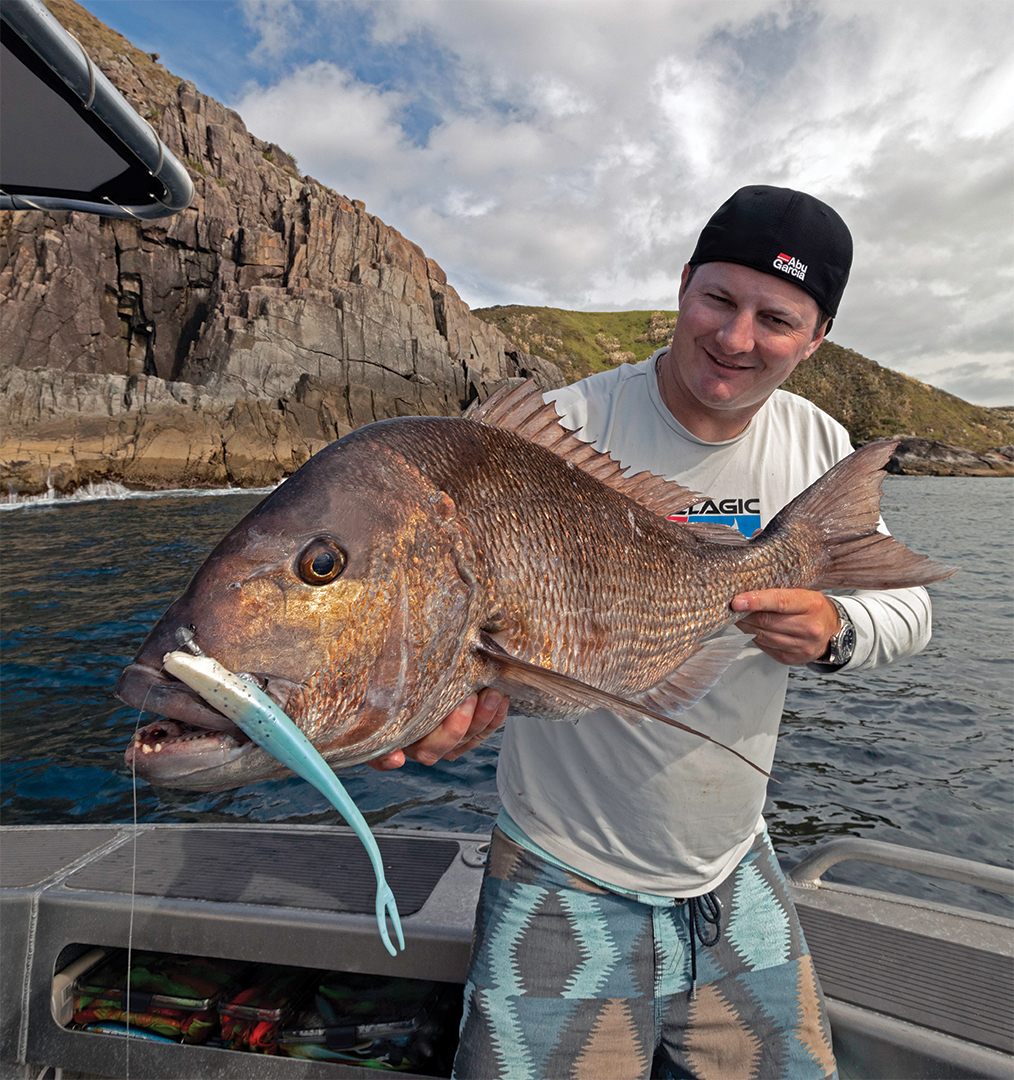
Technically, wash fishing is easy. The biggest hurdle to overcome is getting snagged in the reef or kelp. This frustrates people, especially if they get snagged two or three times in a row. It also creates unnecessary tackle loss and litter on the reef. Assuming the water is not over 10 metres, I like to retrieve it slowly once the bait hits the water. If the water is over 8 metres, I might let it sink for half a second, but basically, I’m moving the bait as soon as it hits the water.
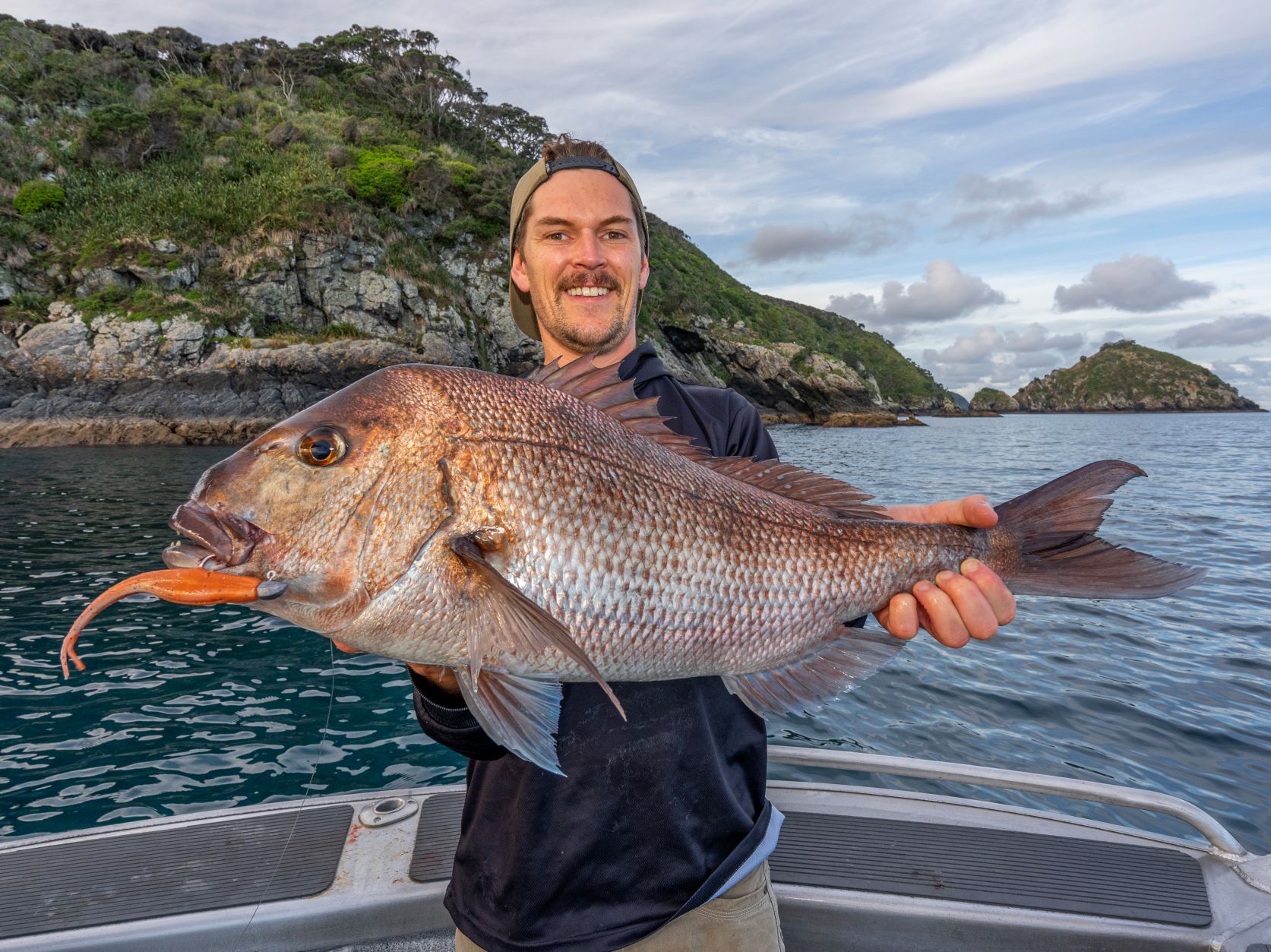

This is a lethal technique, and I may miss the odd fish sitting deep in a gutter, but my attrition rate on jigs is extremely low, and better yet, my bait per fish rate has come right down. You don’t lose Gulp to pickers using this method. Snapper invariably smashes the jig head rather than the tail, so if you lose tails. You are feeding reef fish and perhaps the veracious undersized snapper.
We find the most productive stretches of coastline have good water flow and plenty of bait activity on the sounder. Unless the wind pushes the drift right, a Minn Kota is a prerequisite for this style of fishing. It’s the ultimate stealth mode, and once you have your direction set, all you need to do is cast. Fishing with a Minn Kota allows us a to – at a guess – get 4 times the amount of quality casts in.
The more and more I fish different colours of Gulp indicates that colour is not critical to the success of your day. However, two-tone colours seem more effective, and we generally favour natural baits during the day. Especially dark baits on bright hot sunny days and bright colours early morning. But if I look at all the fish over 70cm caught on HG Fishing. There doesn’t seem to be a colour pattern that dominates more than the next one.
With the Hauraki Gulf, we are spoilt for grounds, and over the course of 4 weeks of fishing, depending on wind direction and accessibility, we never seem to fish the same stretch of the coast. Always looking for that new ledge or rock that’s holding a giant.
See you out there.
